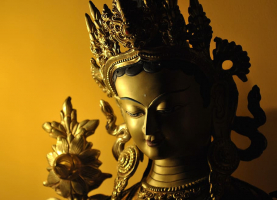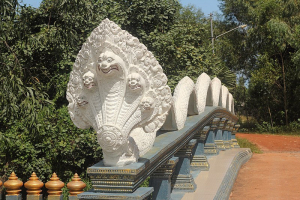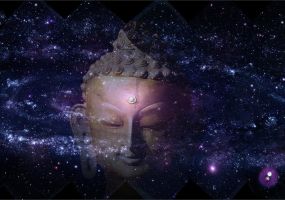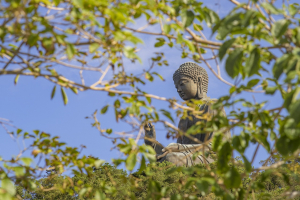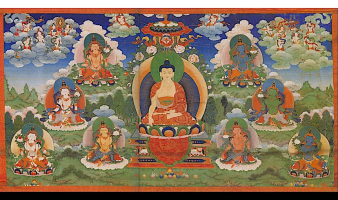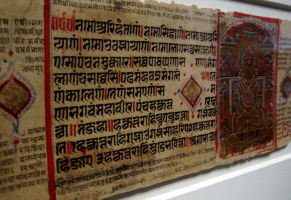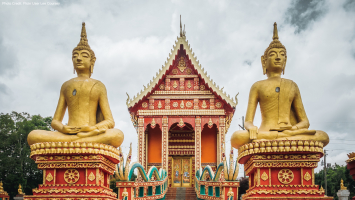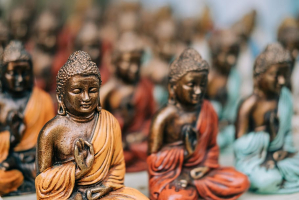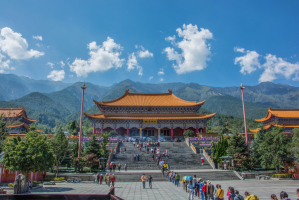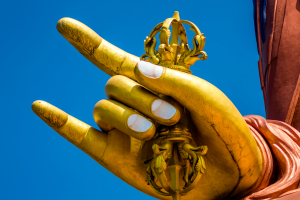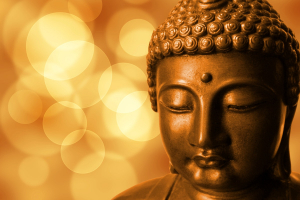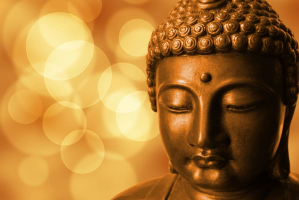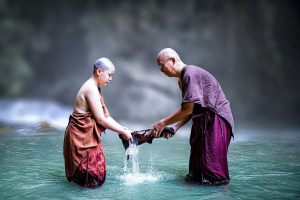Top 10 Most Popular Religious Practices in Buddhism
Buddhism exhibits diverse cultural and regional distinctions, leading to variations in the prevalence of specific religious practices across various Buddhist ... read more...traditions and communities. Within this subject, Toplist can give you insights into the 10 most popular religious practices in Buddhism.
-
Veneration towards Buddhas is a core aspect of Buddhist practice, especially in Mahayana and Vajrayana traditions. This practice entails demonstrating profound reverence, respect, and unwavering devotion to the historical Buddha, Siddhartha Gautama, and other enlightened entities, bodhisattvas, and deities within the Buddhist pantheon. Such veneration operates as a conduit for expressing gratitude, seeking guidance, and nurturing virtues such as humility and compassion.
The prevalent forms of veneration encompass practices such as generating merit, engaging in bows of reverence, presenting offerings, reciting chants, contemplating the virtues personified by particular buddhas or bodhisattvas (such as compassion and wisdom), and embarking on pilgrimages. These acts of veneration are typically undertaken as gestures of deep respect.
Furthermore, adherents deeply revere bodhisattvas, seeking their aid and counsel. Buddhist devotional customs are enacted in spaces where representations or sculptures of Buddhas or bodhisattvas are situated (typically within temples or homes). The enthusiasm for divine acts is intensified during Uposatha days and annual festivals.
Veneration toward Buddhas is a manifestation of faith and a mechanism for nurturing virtues such as gratitude, humility, and unwavering devotion. This practice aids individuals in developing a sense of spiritual connection. It serves as a reminder of the ultimate goal in Buddhism: attaining enlightenment for the benefit of all sentient beings.
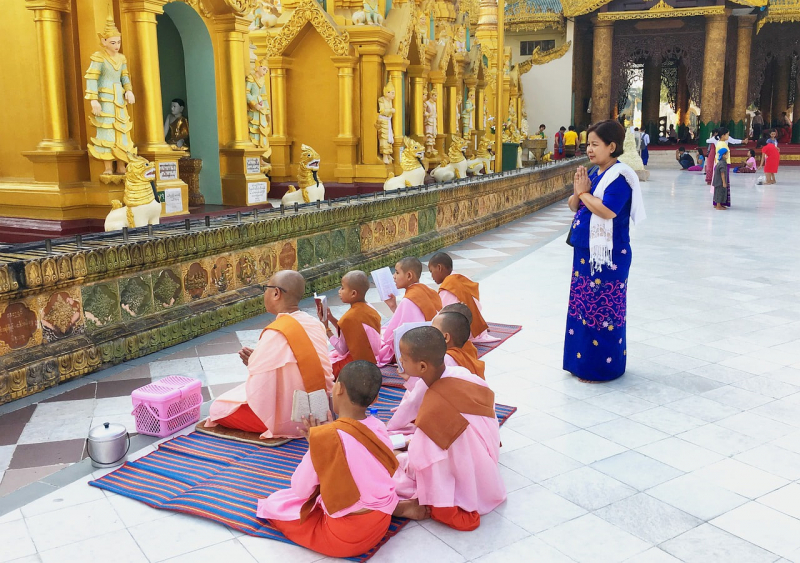
Photo by Needpix 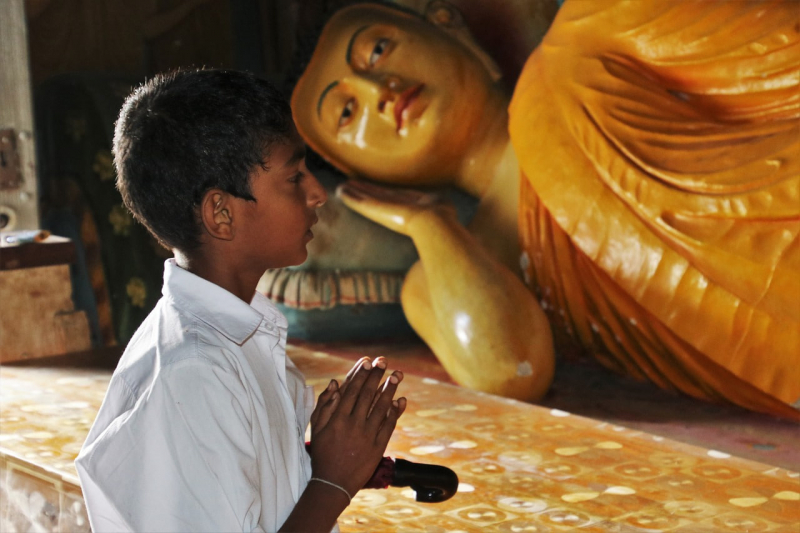
Photo by Needpix -
Meditation is one of the most popular religious practices in Buddhism, aimed at cultivating mindfulness, concentration, insight, and inner serenity. Buddhist meditation aims to attain profound insights into the nature of existence, recognizing all phenomena' impermanent and interdependent essence, ultimately leading to liberation from suffering.
Various traditions may highlight meditation techniques, including Mindfulness, Zen, Samatha, Loving-kindness, Mantra, Walking, and Contemplative Meditation. Guided by these traditions, individuals are led through imaginative scenarios or visualizations, often depicting enlightened beings, which can help develop qualities like compassion and wisdom.
Within certain traditions, meditation is perceived as an evolving journey comprising discernible phases that lead to heightened comprehension, ultimately culminating in enlightenment. Numerous Buddhists engage in meditation retreats, immersive intervals of concentrated meditation practice conducted under the tutelage of seasoned instructors. These retreats provide a platform for refining meditation proficiency and gaining profound insights.
Meditation is not only a practice for monastics but is accessible to lay practitioners as well. It fosters self-awareness, mindfulness, ethical behavior, and the nurturing of virtues. Consistent meditation enables individuals to reconfigure their minds, attain profound insights into existence, and advance toward the ultimate aspiration of liberation from suffering.

Photo on Pixabay (https://pixabay.com/illustrations/monk-meditation-buddhism-sitting-7665006/) 
Photo by Hippopx -
Offerings and Puja, integral practices within diverse Buddhist traditions, serve as channels through which practitioners express devotion, cultivate spiritual virtues, and accumulate positive karma. These rituals bear cultural and ceremonial importance and find expression within temples, monasteries, and homes.
Offerings encompass a range of items, including flowers, incense, candles, food, and other symbolic elements. In certain traditions, offerings of water, light, and fragrances symbolize the purification of body, speech, and mind. Puja involves the recitation of chants, sutras, and mantras, often in native or ancient languages like Pali or Sanskrit.
Making offerings is also a practice of detachment, as it involves giving without attachment to the offering itself or the outcome. While Puja artfully employs symbolic representations, such as images or statues of enlightened beings, serving as focal points for devotion and fostering a profound sense of connection.
Puja is conducted on various occasions, such as during festivals, significant dates in Buddhist history, or personal milestones like births, deaths, and weddings.
Offering and Puja reinforce Buddhism's Three Jewels, nurturing qualities like gratitude, humility, and reverence. These practices allow practitioners to forge a spiritual connection, seek guidance, and traverse their path toward enlightenment.
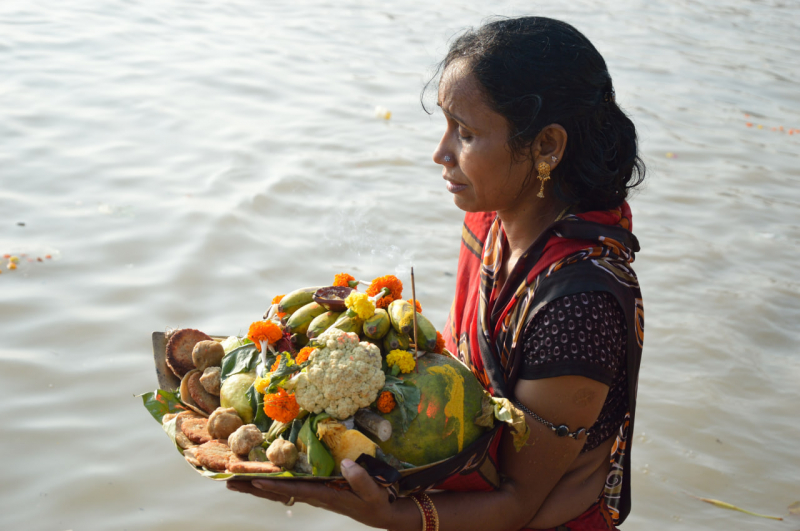
Photo on Wikimedia Commons (https://commons.wikimedia.org/wiki/File:Devotee_with_Offering_-_Chhath_Puja_Ceremony_-_Ramkrishnapur_Ghat_-_Howrah_2013-11-09_4124.JPG) 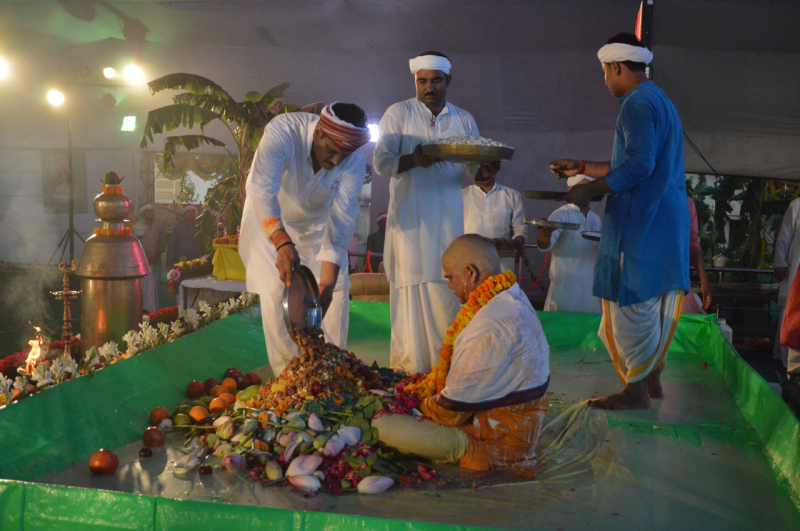
Photo on Wikimedia Commons (https://commons.wikimedia.org/wiki/File:Offerings_-_Ravi_Shankar_Sharma_Puja_-_Rawatpura_Sarkar_Ashram_-_Chitrakoot_-_Satna_2014-07-05_6128.JPG) -
Pilgrimages occupy a significant role in Buddhist practice. A pilgrimage involves traveling to sacred sites or places of spiritual significance associated with the life, teachings, and enlightenment of the Buddha and other revered figures. These odysseys provide practitioners with deep reflection, purification, and a heightened spiritual connection.
These sacred journeys frequently encompass pivotal locales closely tied to the Buddha's narrative, including Lumbini (birthplace), Bodh Gaya (place of enlightenment), Sarnath (site of the first sermon), and Kushinagar (place of passing). Beyond these central sites, many other pilgrimage destinations are interlinked with significant milestones from the Buddha's journey and areas associated with venerable disciples and bodhisattvas.
Pilgrims partake in many rituals, encompassing circumambulation (circulating a sacred object or location), offerings, and participation in prayers or chants at each juncture. These rituals embody acts of devotion and purification. Pilgrimages are undertaken with an array of intentions, spanning from the quest for blessings and accumulation of merit to personal metamorphosis and a heightened connection to the boundless realm of Dharma.
Essentially, a Buddhist pilgrimage transcends physical traversing; it metamorphoses into an enlightening and transformative sojourn. By immersing themselves in Buddhism's spiritual legacy, practitioners can traverse through time, reliving pivotal chapters of the Buddha's narrative. This, in turn, kindles inspiration and serves as an abiding testament to the wisdom encapsulated in the teachings of Dharma.
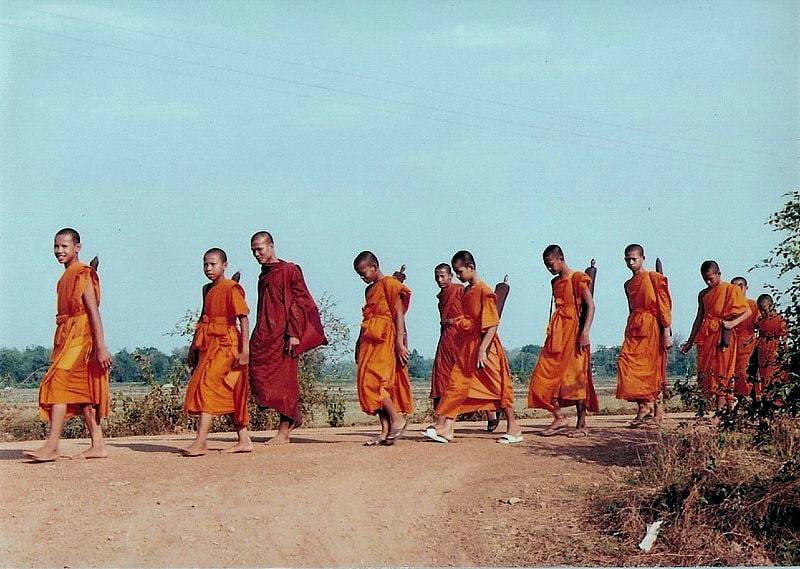
Photo on Wikimedia Commons (https://commons.wikimedia.org/wiki/File:Monk_on_pilgrimage.jpg) 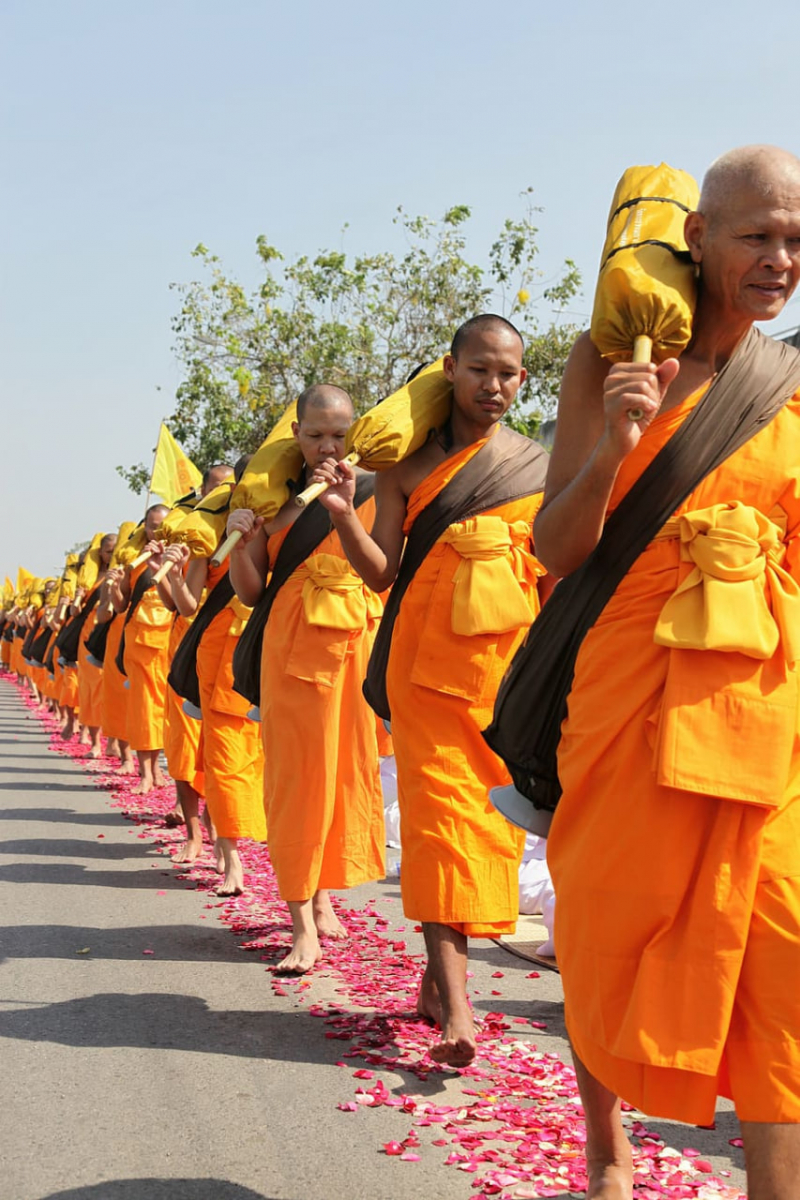
Photo on HD wallpaper (https://www.wallpaperflare.com/buddhists-monks-buddhism-walk-orange-robes-thai-wat-wallpaper-apbxz) -
Chanting is a widespread practice revered within diverse Buddhist traditions. Chanting serves a manifold purpose: it expresses reverence for the Buddha, bodhisattvas, and other enlightened beings; enables the internalization of sutras and their teachings; and fosters a serene backdrop for meditation and contemplation.
Devotees recite passages from these scriptures to deepen their understanding of core principles and concepts. Chanting directs practitioners' awareness to the present moment and the resonances evoked by the sound, thereby facilitating the development of mindfulness and concentration, amplifying the efficacy of meditation practice.
Chants often adhere to specific melodic and rhythmic sequences, creating a tranquil and contemplative atmosphere. This aids practitioners in entering heightened states of meditation. Verses may be articulated in various languages, such as Pali, Sanskrit, Tibetan, or the vernacular native to the region. Emphasis on accurate pronunciation stems from the spiritual significance inherent in the sound itself.
Chanting is pivotal in various Buddhist rituals and ceremonies. This dynamic engages multiple senses—voice, hearing, and often touch. It facilitates a connection with the sacred, cultivates a contemplative atmosphere, and aligns practitioners with the core teachings of Buddhism, nurturing spiritual growth and insight.
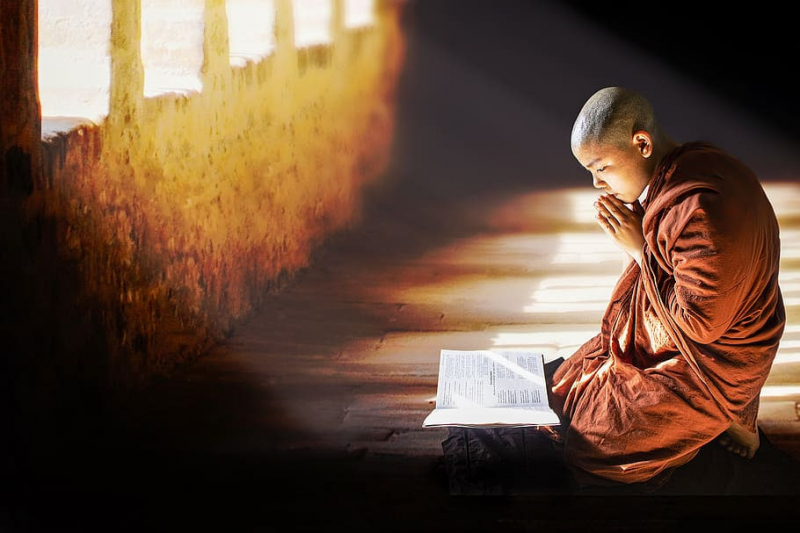
Photo on Pxfuel (https://www.pxfuel.com/en/free-photo-xswpk) 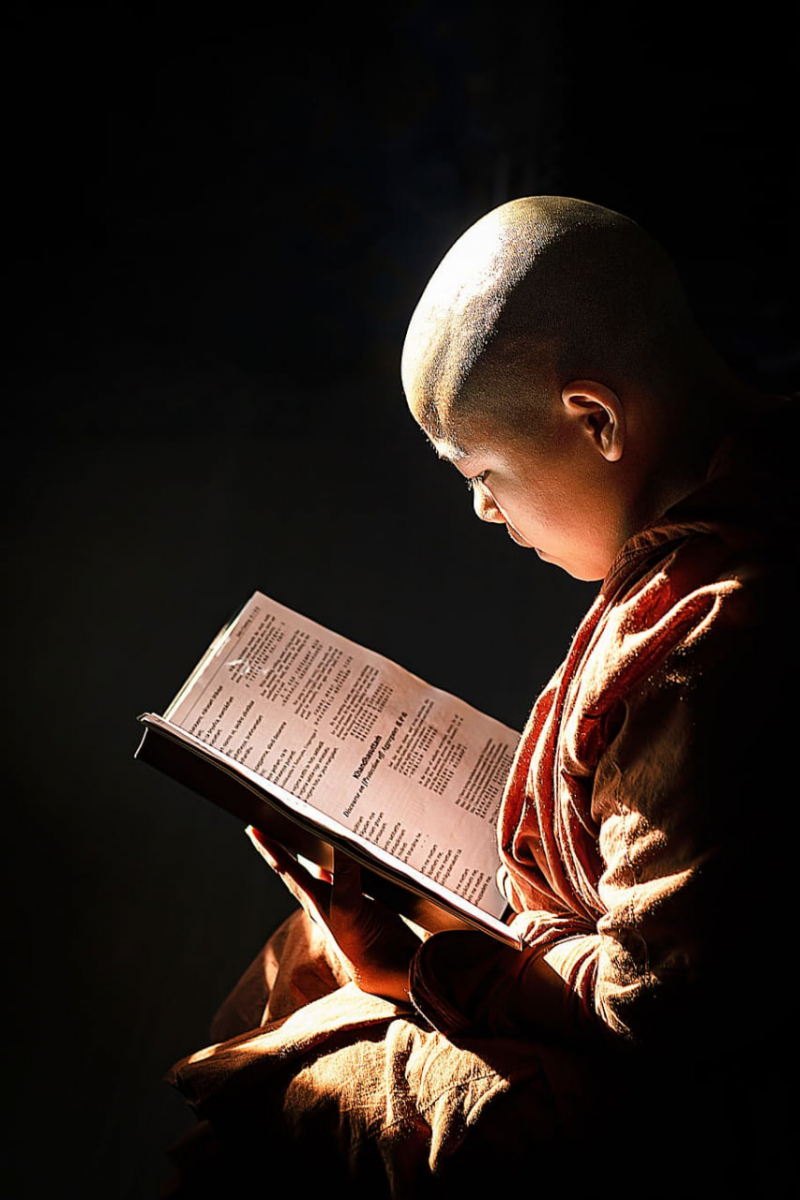
Photo on Pxfuel (https://www.pxfuel.com/en/free-photo-xshvm) -
Prostration holds profound symbolism and finds embodiment within numerous Buddhist traditions. This reverential practice involves bowing profoundly and humbly, with one's forehead touching the ground. It is a customary ritual observed across various Buddhist schools and is often accompanied by recitations or prayers.
A prostration is a symbolic act of surrendering one's ego, pride, and self-centeredness. Through bowing, practitioners signify their readiness to detach from attachments and illusions, embracing an attitude of openness and receptivity. Additionally, prostration is a homage-paying gesture directed towards the Three Jewels of Buddhism, enlightened beings, and bodhisattvas.
Prostrations manifest in diverse forms, encompassing complete prostration, half prostration, and standing prostration. The practice is believed to serve as a conduit for purifying negative karma and habitual patterns, enabling nurturing positive qualities and virtues - the act of bowing fosters an inner metamorphosis, contributing to the transcending of arrogance and self-centered tendencies.
This embodied act of prostration eloquently encapsulates Buddhism's fundamental tenets and principles, guiding practitioners to align their conduct with their spiritual aspirations. Individuals forge a deep connection with the Dharma by involving body, speech, and mind in this profound practice, nurturing qualities pivotal to enlightenment.
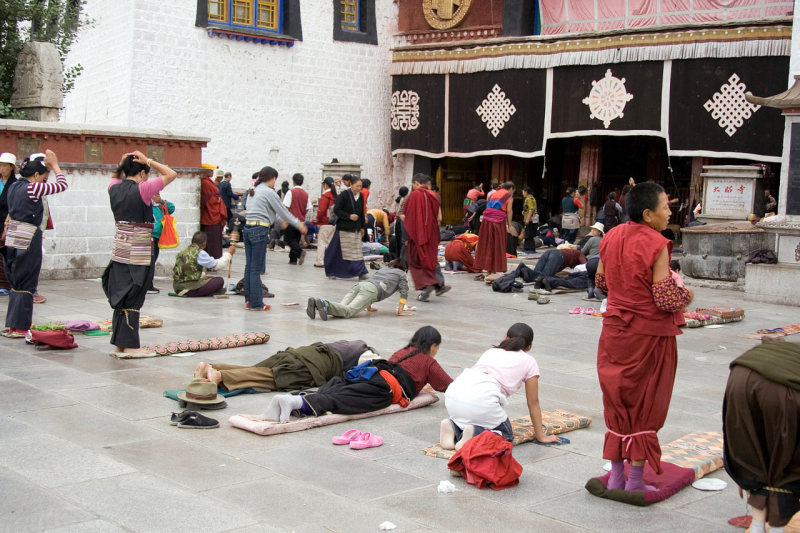
Photo on Wikimedia Commons (https://commons.wikimedia.org/wiki/File:IMG_1016_Lhasa_Barkhor.jpg) 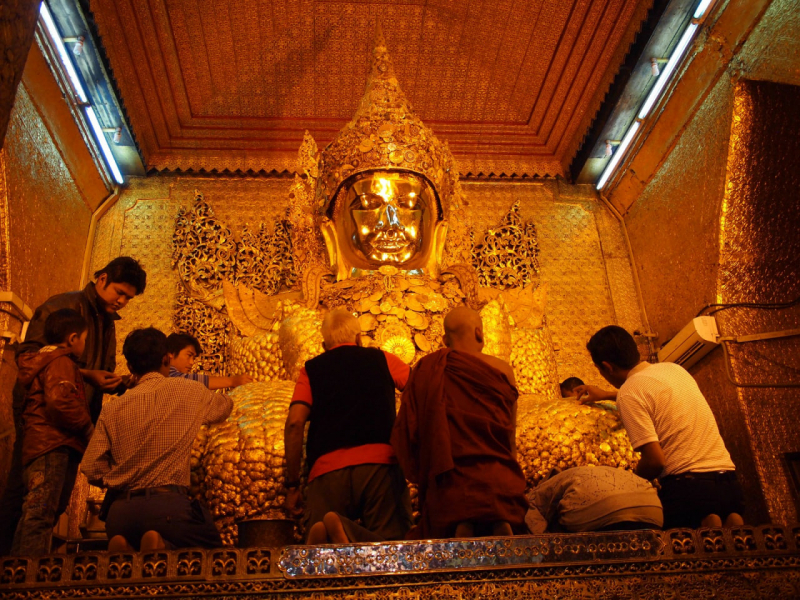
Photo on Wikimedia Commons (https://commons.wikimedia.org/wiki/File:Prayers_and_gold_leaf_being_applied_by_devotees_Buddhist_culture_religion_rites_rituals_sights.jpg) -
Generosity, known as "dana" in Buddhism, is central to Buddhist traditions. It embodies the generous act of giving, sharing, and contributing without anticipating receiving anything in return. This practice is a bedrock for spiritual development, amassing positive karma, and a conduit for nurturing selflessness and compassion.
Generosity is often described in three forms: giving material possessions, protection, and teachings or guidance. Giving is closely linked to renunciation, where individuals voluntarily simplify their lives and detach from material attachments. Through sharing their resources, adherents surmount attachment and nurture contentment.
Under a spirit of selflessness and compassion, generosity transcends grand gestures, finding resonance in modest acts of benevolence, kindness, and sharing. It encompasses aiding those in need, displaying empathy, and offering the gift of one's time and skills.
Generosity encompasses more than mere material giving; it extends to the bestowal of one's time, energy, empathy, and understanding. By embodying this virtue, practitioners aspire to rupture the cycle of self-centeredness, fostering a profound realization of the interconnected fabric of all existence. In Buddhism, generosity is a transformative practice that cultivates spiritual maturation, compassion, and a deep awareness of the interwoven essence of all life.
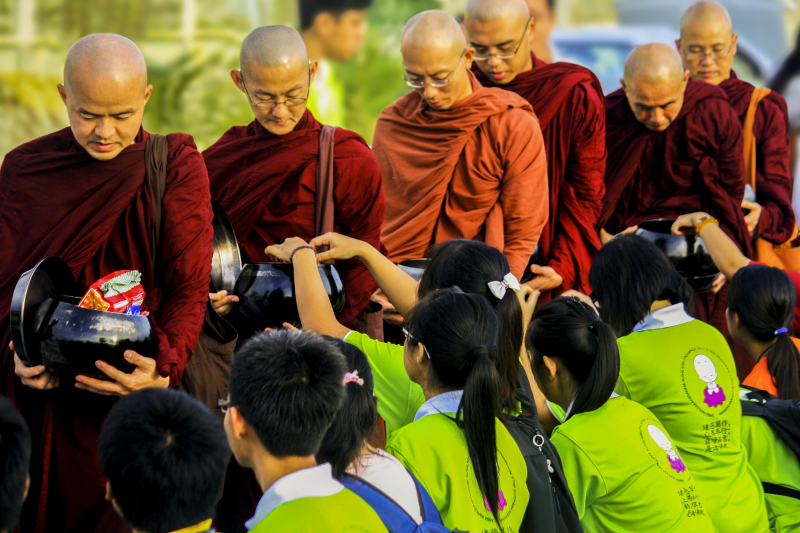
Photo on Pexel (https://www.pexels.com/photo/asian-buddhism-buddhist-generosity-220591/) 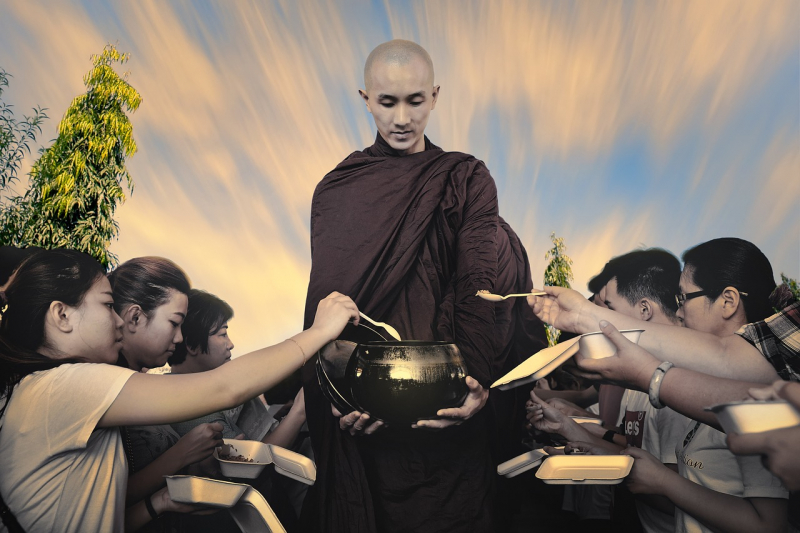
Photo on Pixabay (https://pixabay.com/photos/monk-buddhist-theravada-religious-5780622/) -
Vesak is a foremost and universally embraced Buddhist holiday, commemorating the birth, enlightenment, and parinirvana of Siddhartha Gautama, the historical Buddha. This festive occasion has diverse religious and cultural customs that ebb and flow by distinct Buddhist traditions and geographical locales.
Vesak holds its customary observance on the full moon day of the Vesak month, typically falling in April or May within the Buddhist calendar. Devotees engage in devoted practices, including temple visits, offerings, and participation in meditative and chanting sessions. The day resonates with the spirit of support for the monastic community, as Buddhists ardently extend acts of generosity.
Decorative Vesak lanterns illuminate many Buddhist nations' homes, temples, and public spaces. Kindling lamps and candles encapsulate the symbolism of dispelling ignorance with the luminance of wisdom. Another ritual involves bathing Buddha statues, a symbolic gesture of purification and rejuvenation. In select regions, grand processions adorned with images and relics of the Buddha grace the celebrations.
Vesak is a time of reflection, renewal, and deepening one's spiritual practice. It's a day when Buddhists unite to honor the Buddha's legacy, profound teachings, and extraordinary journey toward enlightenment. While the specifics of Vesak's festivities may vary, the underlying current of spiritual awe and the aspiration to tread the path of compassion and wisdom remain constant and universal.
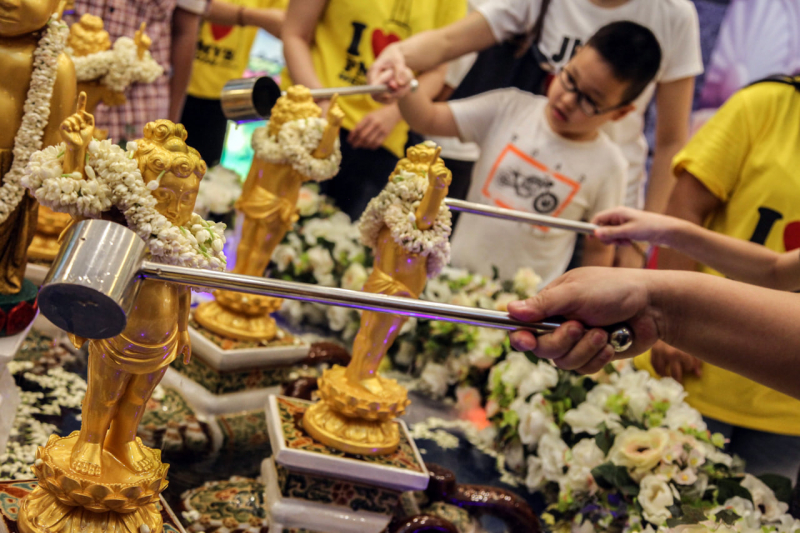
Photo on Wikimedia Commons (https://commons.wikimedia.org/wiki/File:Indonesia_Buddhists_Vesak_Day.jpg) 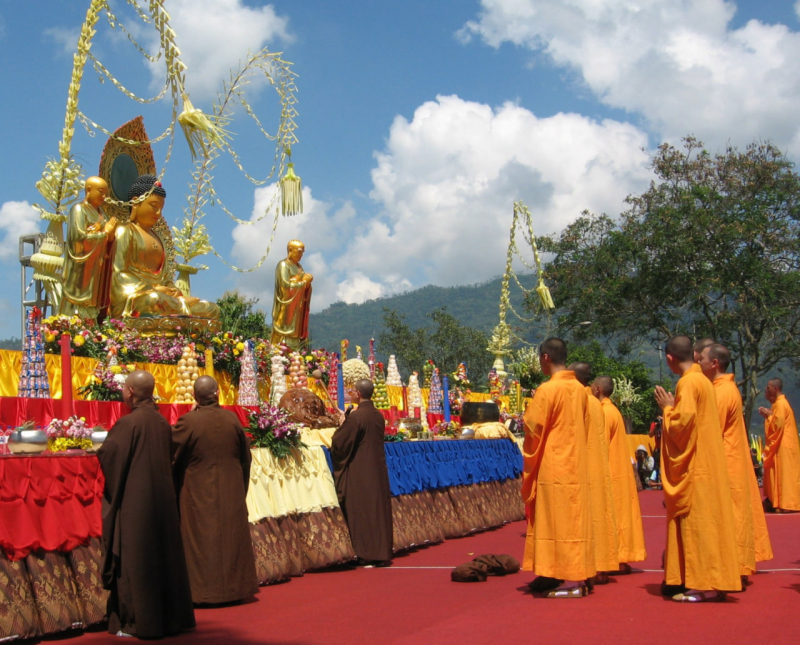
Photo on Wikimedia Commons (https://commons.wikimedia.org/wiki/File:Vesak_Day_2555.jpg) -
Monastic practices encompass an array of disciplines and routines embraced by monks and nuns within monastic communities. These practices are meticulously crafted to bolster spiritual evolution, nurture ethical comportment, and facilitate the pursuit of enlightenment.
Central to monastic existence is relinquishing worldly attachments, a tenet harmonized with embracing an uncomplicated lifestyle. Monks and nuns typically lack personal belongings and reside within communal enclaves like monasteries or nunneries. Adherence to a regimented daily schedule is the norm, encompassing meditation, study, and collective engagements.
Monks commonly embark on alms rounds, receiving sustenance from lay patrons. In some traditions, monastics engage in forest monasticism, retreating to natural settings for solitude and intensive meditation. Further, pilgrimages to sacred locales and immersion in retreats may be undertaken by monastics, enriching meditation practices, and kindling profound spiritual insights.
Monastic practices, guided by the principles of ethical conduct, mental development, and wisdom, provide a structured framework for individuals seeking a path of spiritual awakening and liberation from suffering. These practices not only benefit the individual practitioner but also contribute to the broader Buddhist community and the propagation of the Dharma.
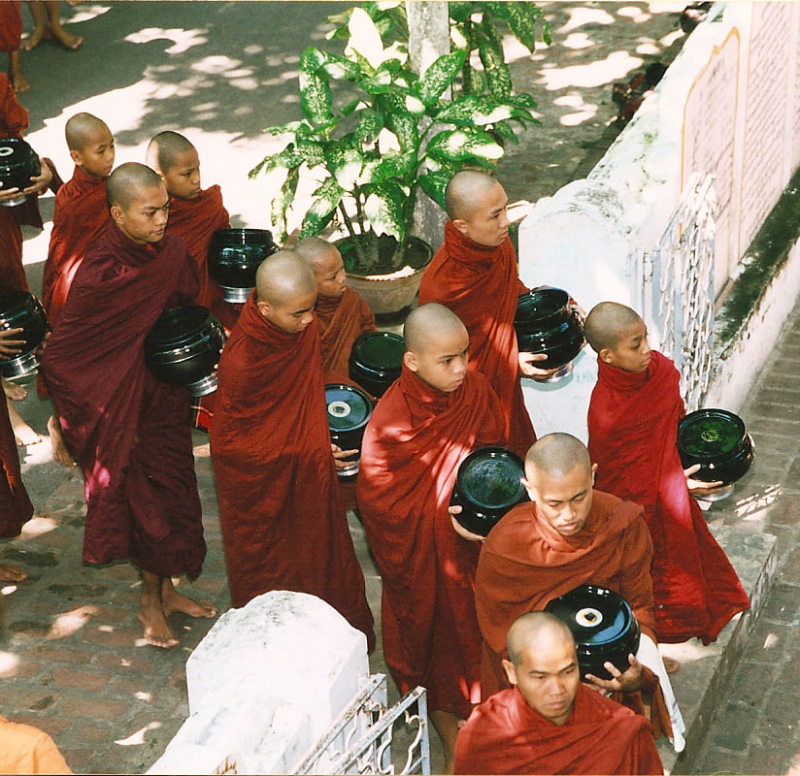
Photo on Wikimedia Commons (https://commons.wikimedia.org/wiki/File:Mahagandhayon_Monastic_Institution,_Amarapura,_Myanmar.jpg) 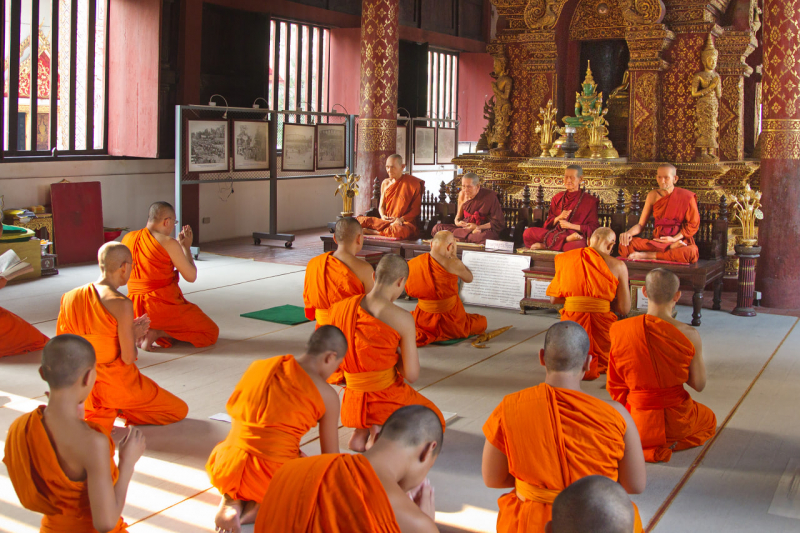
Photo on Wikimedia Commons (https://commons.wikimedia.org/wiki/File:Monks_in_Wat_Phra_Singh_-_Chiang_Mai.jpg) -
Bodhisattva vows are ethical commitments undertaken by Mahayana Buddhist practitioners dedicated to attaining enlightenment for the ultimate benefit of all sentient beings. In Mahayana Buddhism, adherents willingly undertake vows that encompass the noble pursuit of Buddhahood for the comprehensive use of all sentient beings. These vows resound with the echoes of compassion, altruism, and an unwavering resolve to shepherd all beings toward the boundless shores of liberation.
The core tenets of the bodhisattva path are succinctly encapsulated in three pivotal vows: The Vow of Great Compassion, The Vow of Great Vow, and The Vow of Great Action. Rooted in an innate longing to alleviate the suffering of every sentient being, bodhisattva vows are a testament to the commitment to cultivating boundless compassion and unwavering selflessness, placing the well-being of others above personal concerns.
The bestowal of bodhisattva vows typically occurs through formal ceremonies officiated by qualified teachers. While lay practitioners seamlessly weave their altruistic aspirations into the fabric of daily existence, monastic practitioners amplify their dedication to compassion and selfless service, dedicating their lives to the pursuit of collective liberation.
At its core, bodhisattva vows an unwavering dedication to all beings' holistic well-being and emancipation. Embracing these vows, practitioners embark on a transformative path characterized by selflessness, compassion, and dynamic engagement with the world, catalyzing positive transformations and spiritual elevation for themselves and the entirety of conscious existence.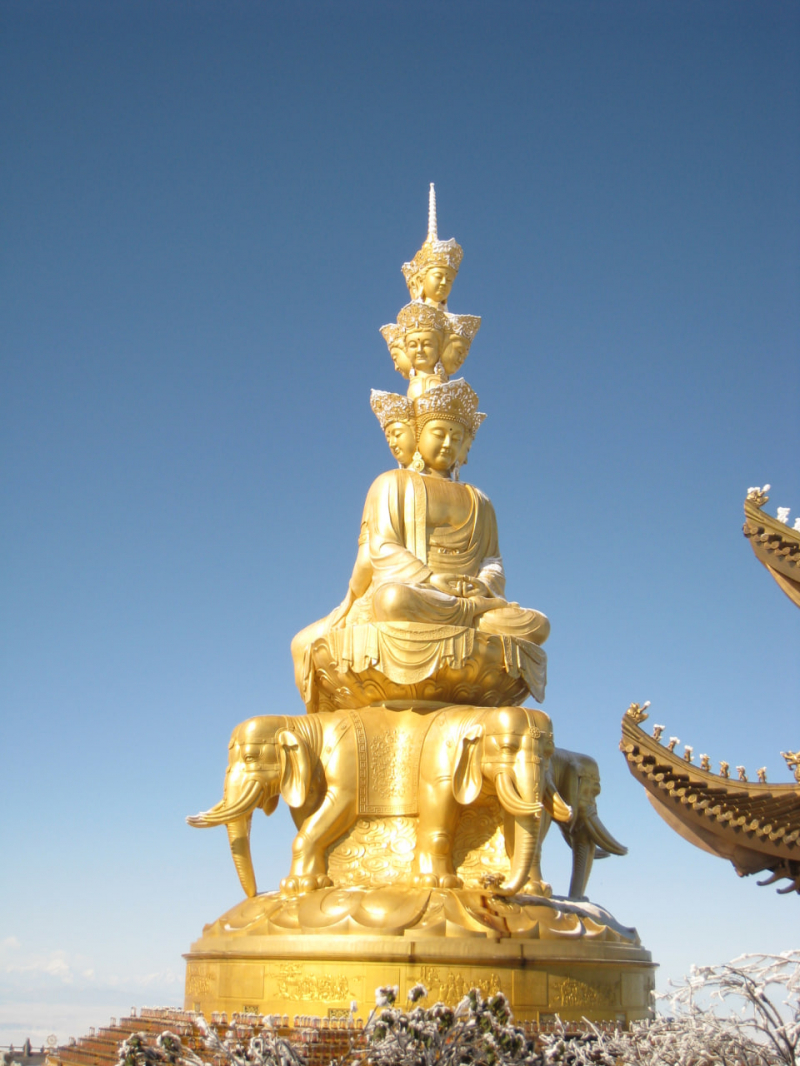
Photo on Wikimedia Commons (https://commons.wikimedia.org/wiki/File:Sutra_of_The_Great_Vows_of_Ksitigarbha_Bodhisattva-m.JPG) 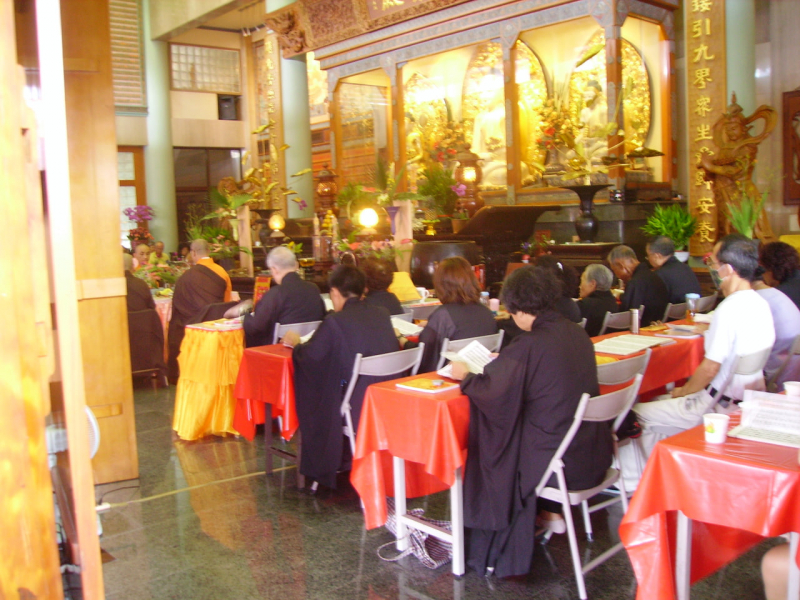
Photo on Wikimedia Commons (https://commons.wikimedia.org/wiki/File:Bodhisattva_Samantabhadra_-_Mount_Emei_-_China.jpg)












